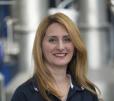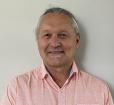The page you requested does not exist. For your convenience, a search was performed below using the query edu using using nuclear.
ANSTO provides secondary students with a range of learning resources for those interested in science or studying for exams. For teachers, ANSTO provides learning resources and professional development, as well as in-school-term science tours and videoconferences. Workbooks are provided as required learning material to accompany a school visit to ANSTO. They can also be used on their own as a classroom resource.

Wasteform Scientist
Role at ANSTO
The SAAFE Program supports early career researchers at PhD and Postdoctoral level to expand research and innovation activities within Human Health, the Environment and the Nuclear Fuel Cycle, to initiate sustainable research networks and linkages to support Australia, New Zealand and France research and innovation.
Professor Peter Lay from the University of Sydney has been awarded the Australian Synchrotron Lifetime Contribution Award by ANSTO, the Australian Nuclear Science and Technology Organisation.
Over the last decades, neutron, photon, and ion beams have been established as an innovative and attractive investigative approach to characterise cultural-heritage materials.
Come and discover the world of science at the Australian Synchrotron - book a school tour today.

Imaging Neurophysiologist
Role at ANSTO
ANSTO is an experienced provider of Teacher Professional Development for Australian and International teachers and our courses cover a wide range of topics. Hear from expert speakers, receive new education resources, and develop lessons for your own class.
Proposals at the Australian Centre for Neutron Scattering and National Deuteration Facility.
Come and discover the world of nuclear science at ANSTO - book a school tour in Sydney today.
Highlights of the Energy Materials Project.

Science Research Leader
Role at ANSTO
This joint initiative at ANSTO has developed a new capability: solid surface radiolabelling to evaluate Auger emitting sources for next-generation targeted therapy.
ANSTO seeks candidates who are passionate about making a contribution to Australian society through supporting nuclear science and technology.
A team of scientists from The Australian National University (ANU) has discovered how a powerful “weapon” used by many fungal pathogens enables them to cause disease in major food crops such as rice and corn
Pagination









